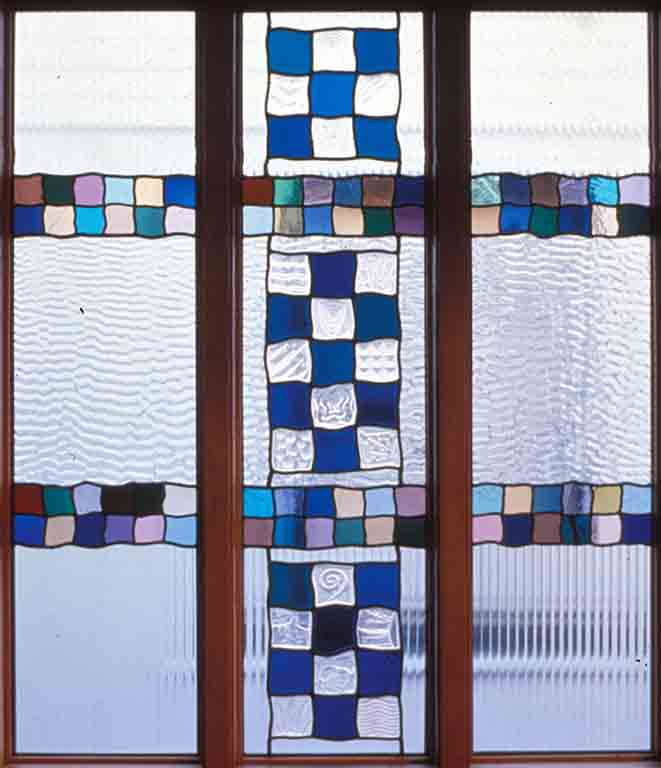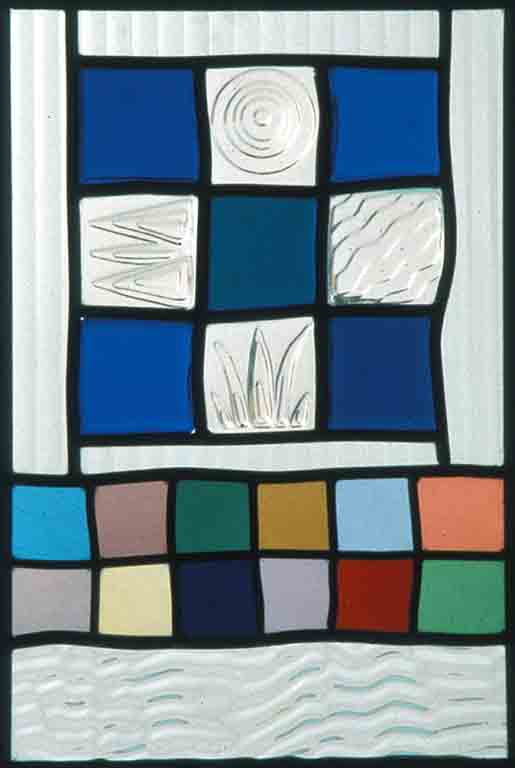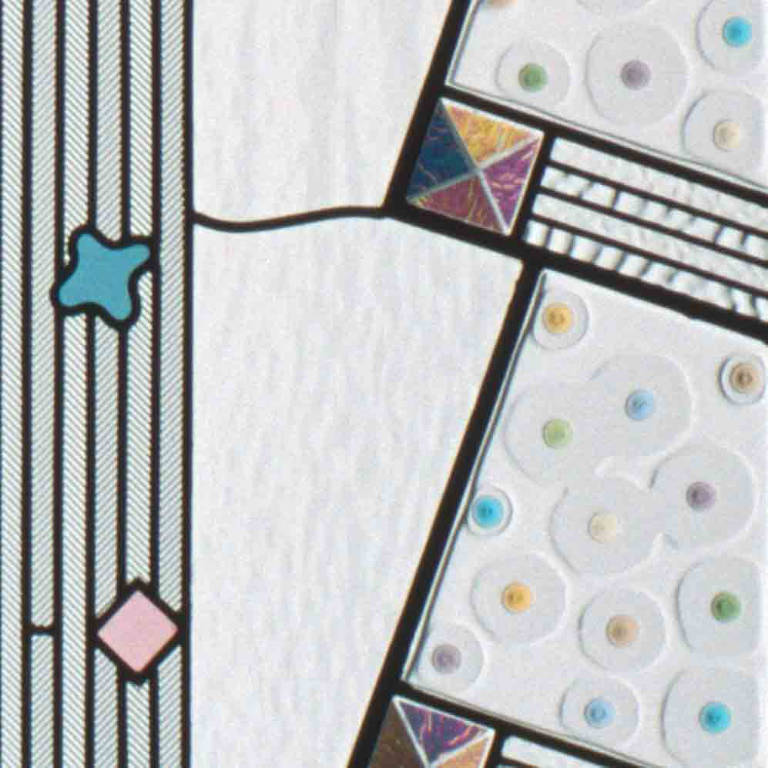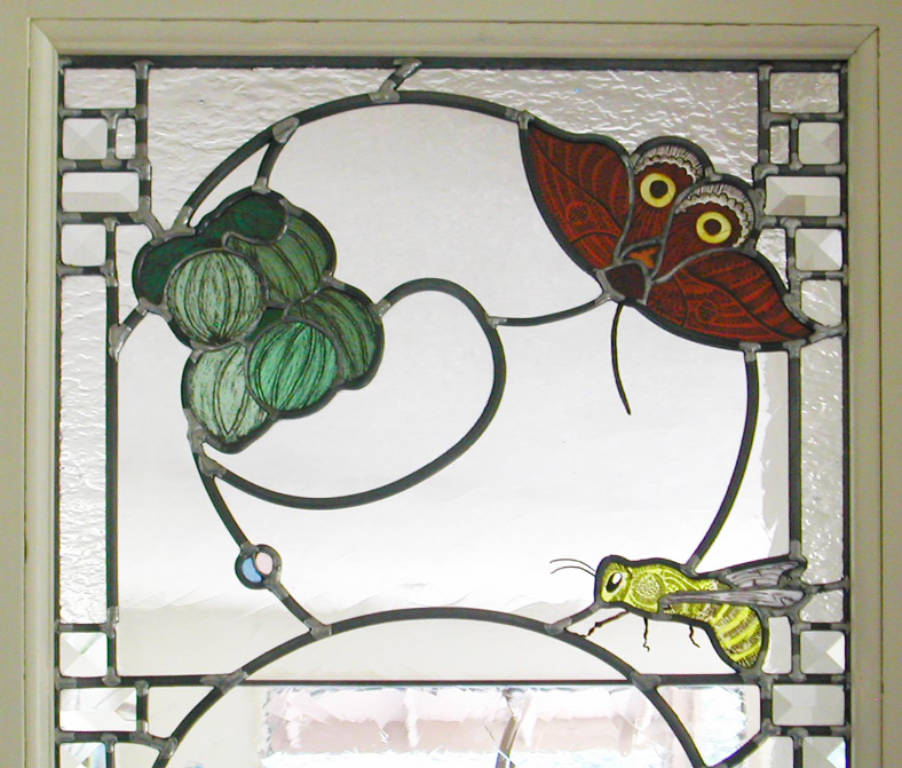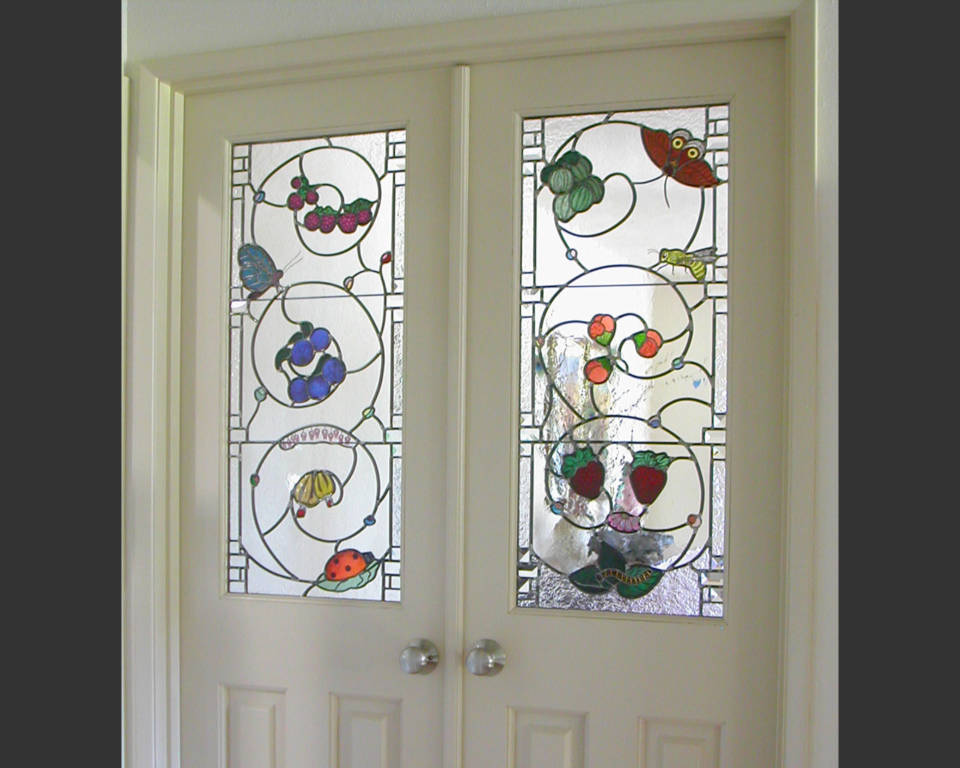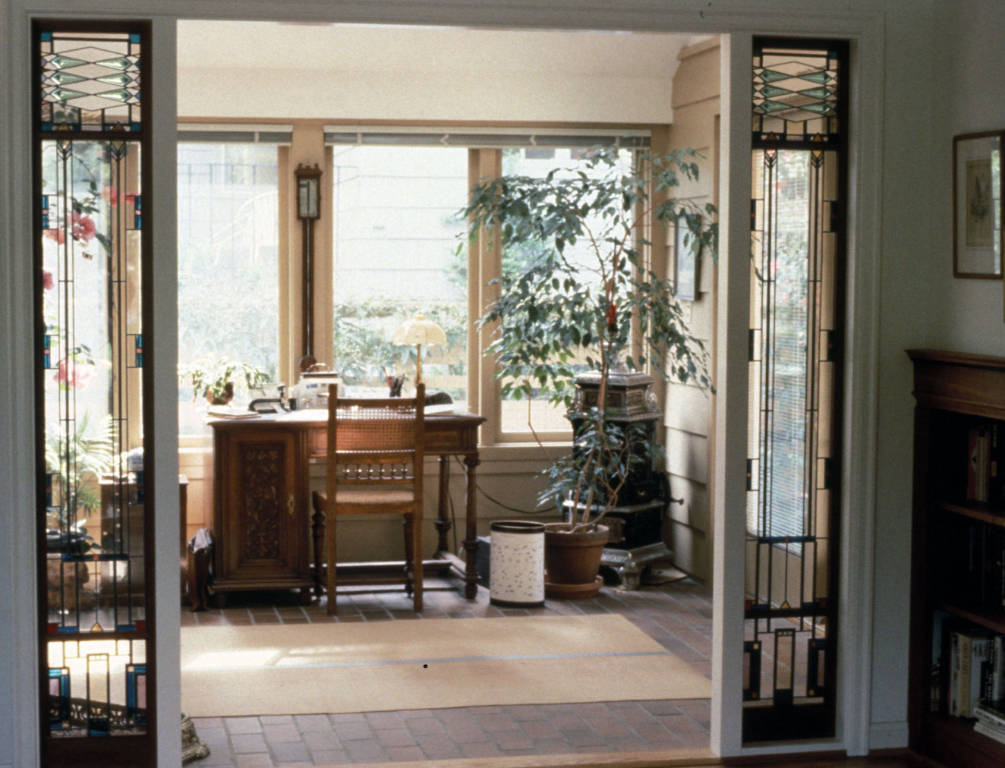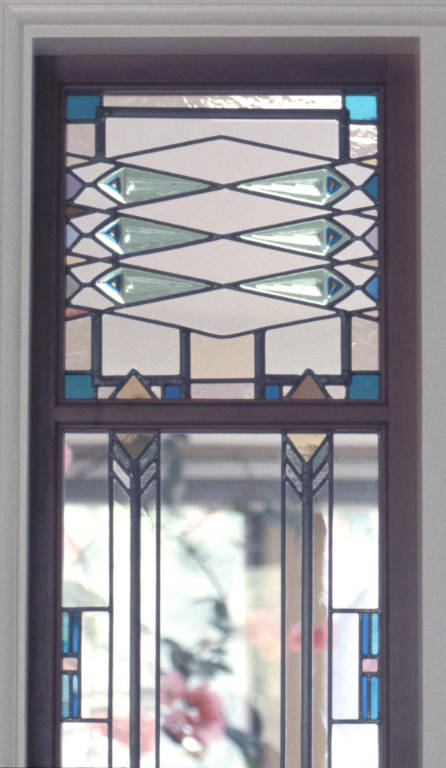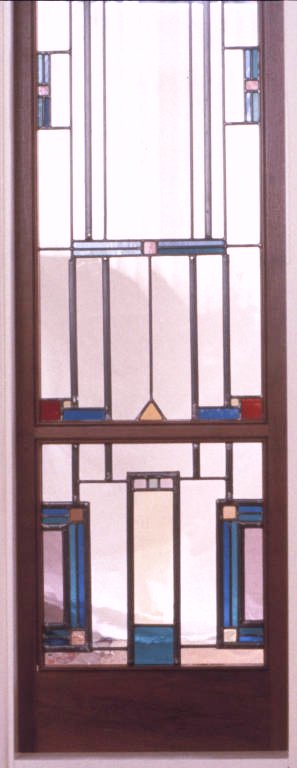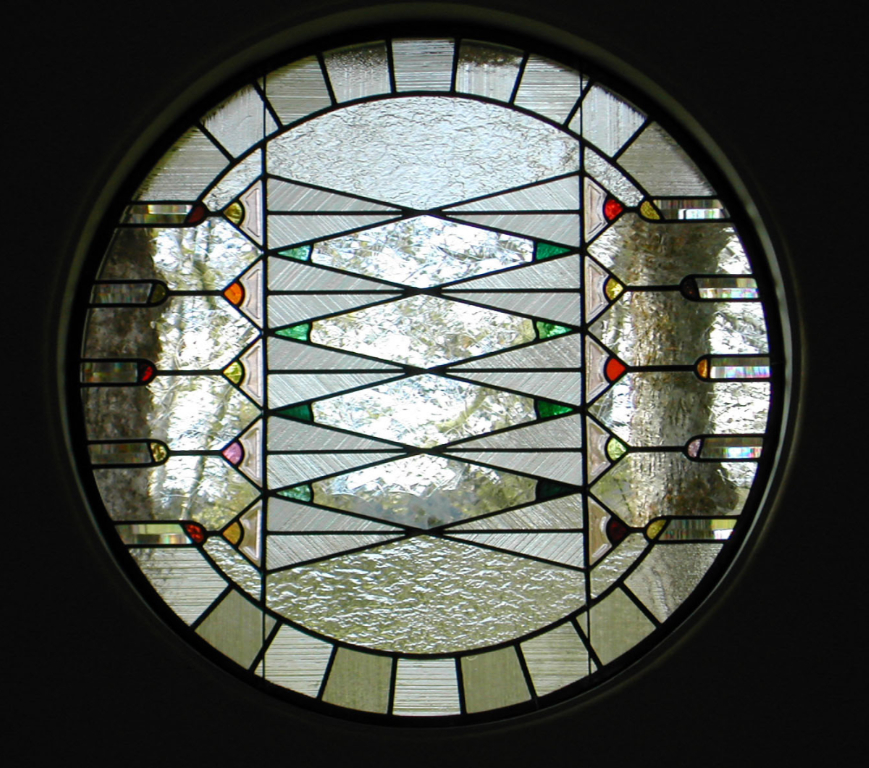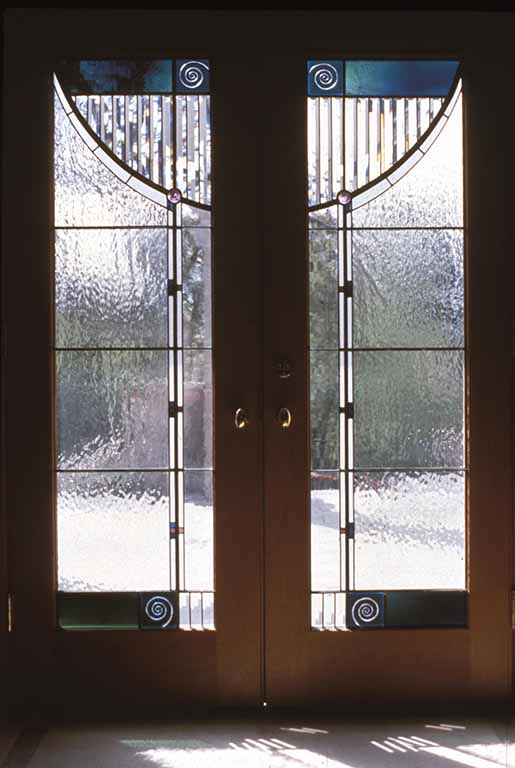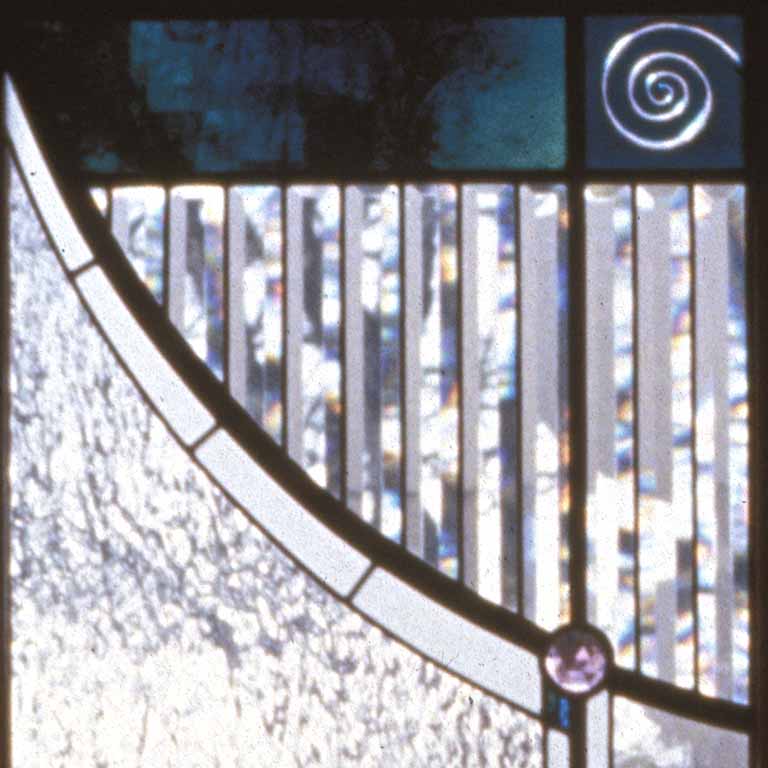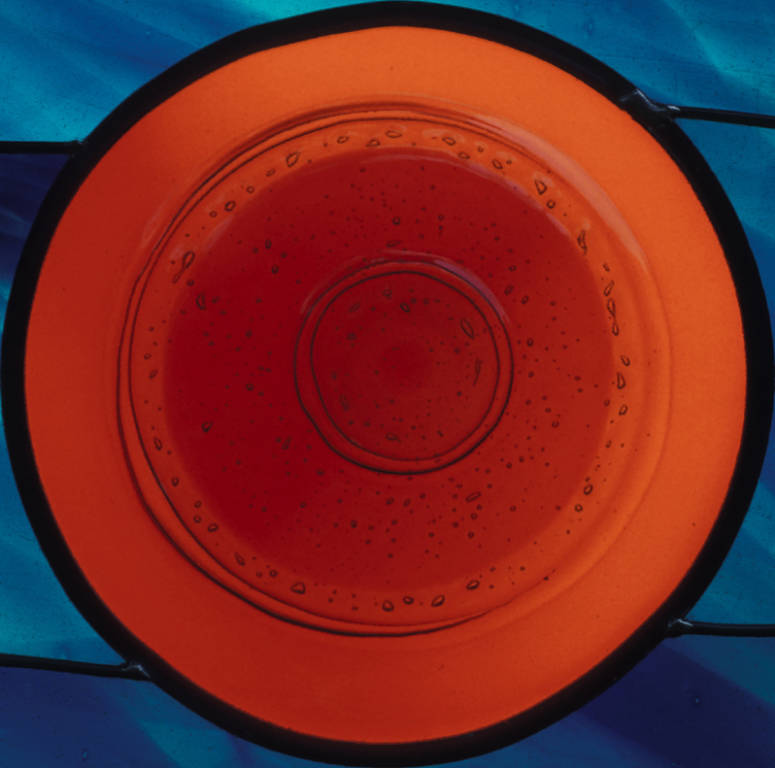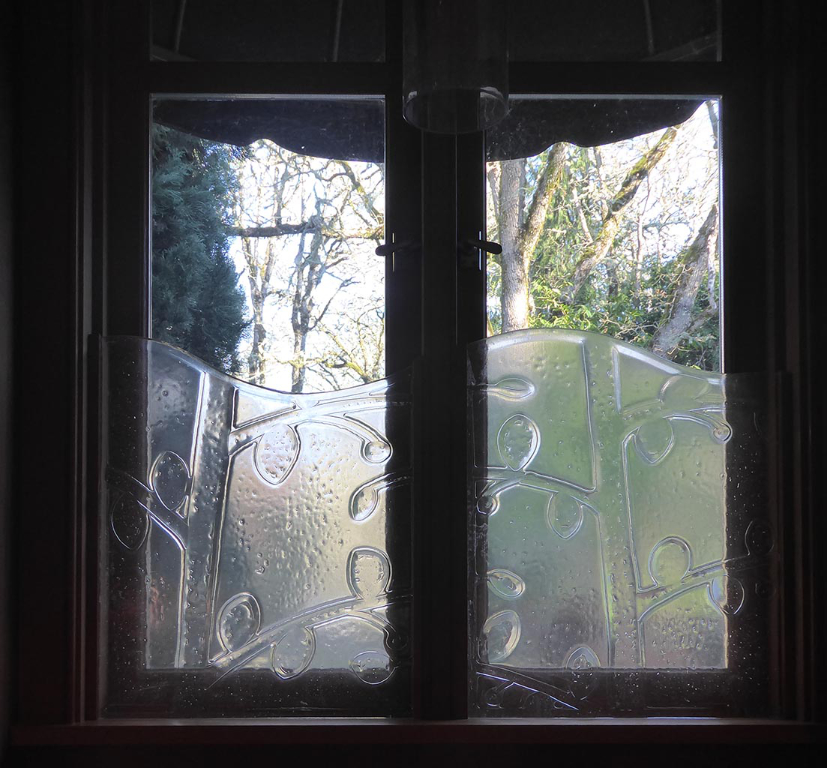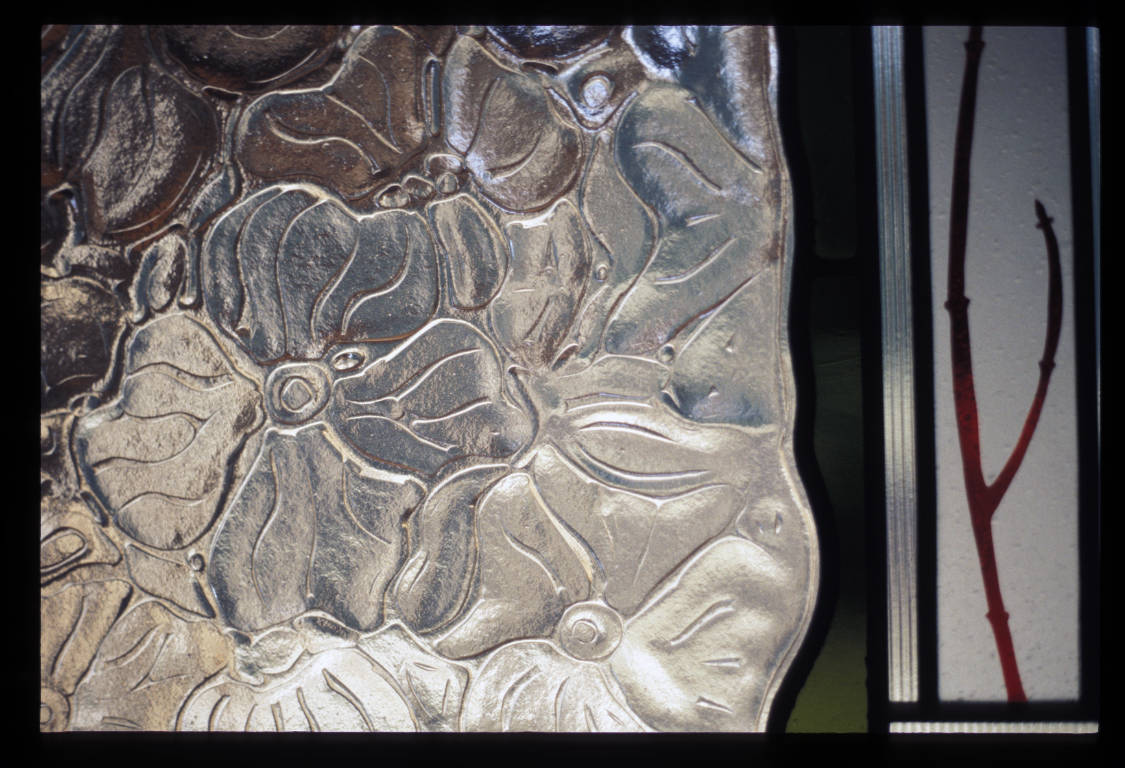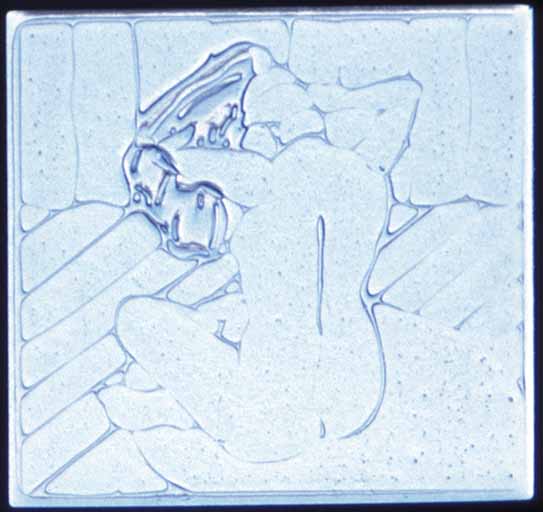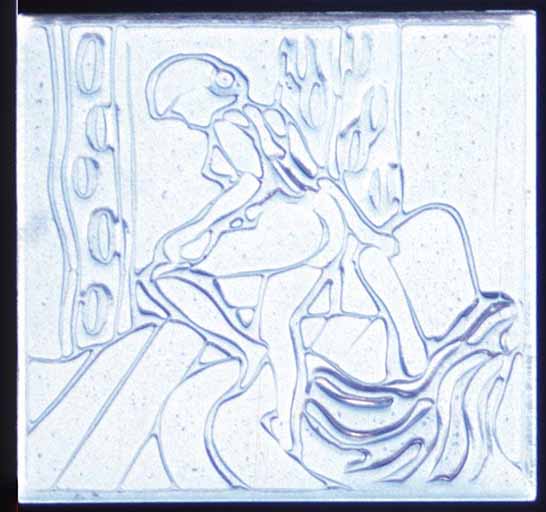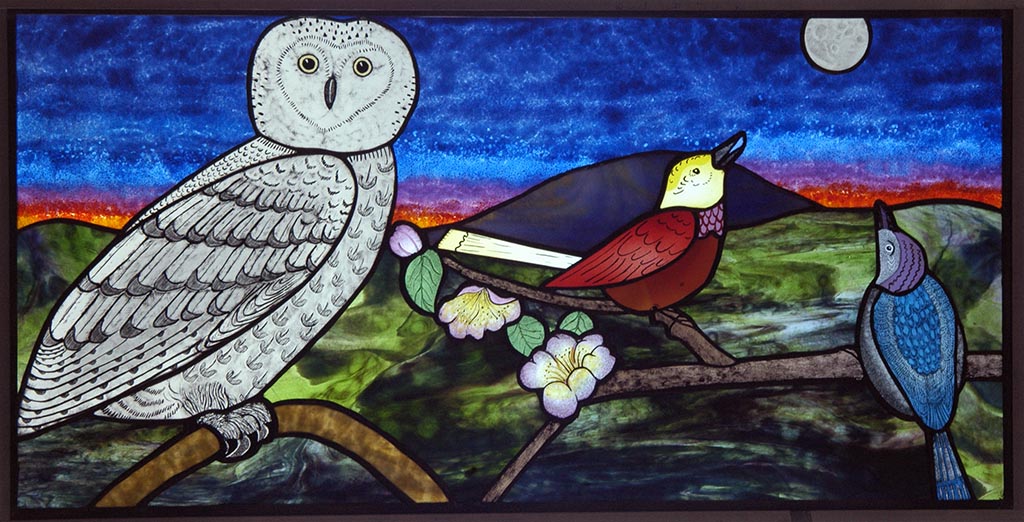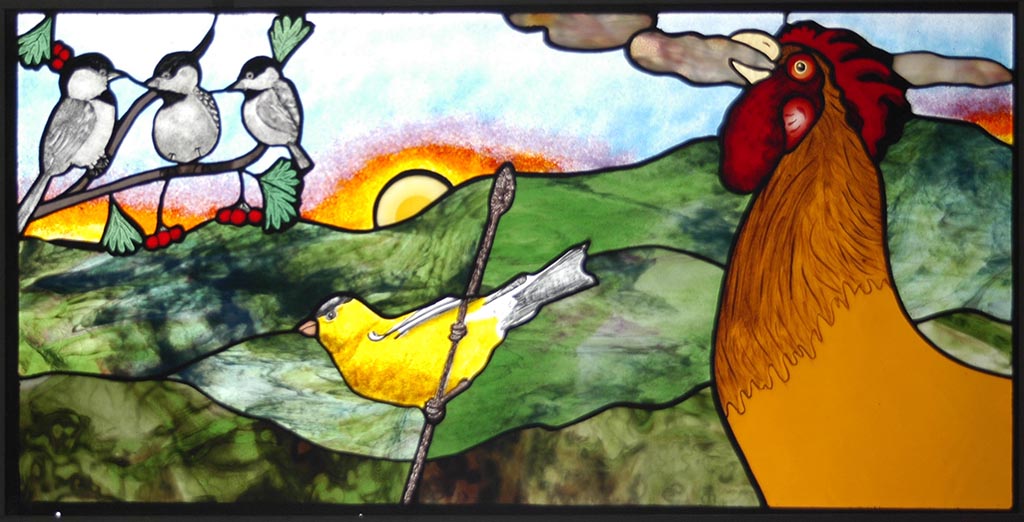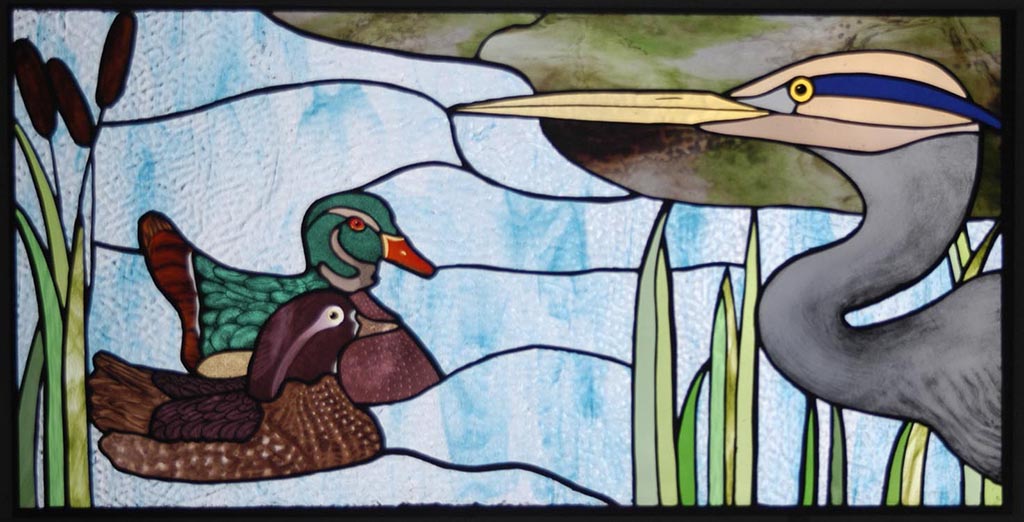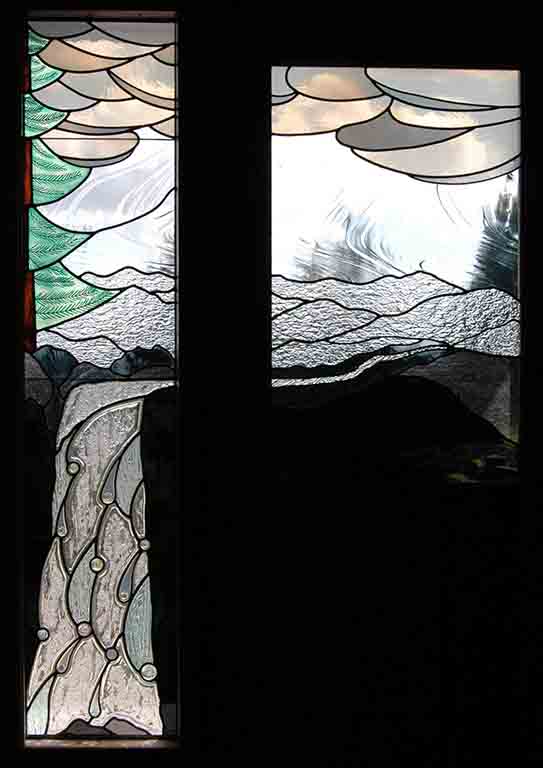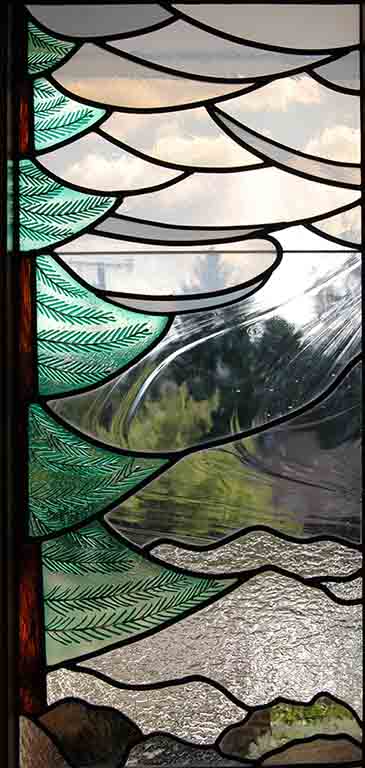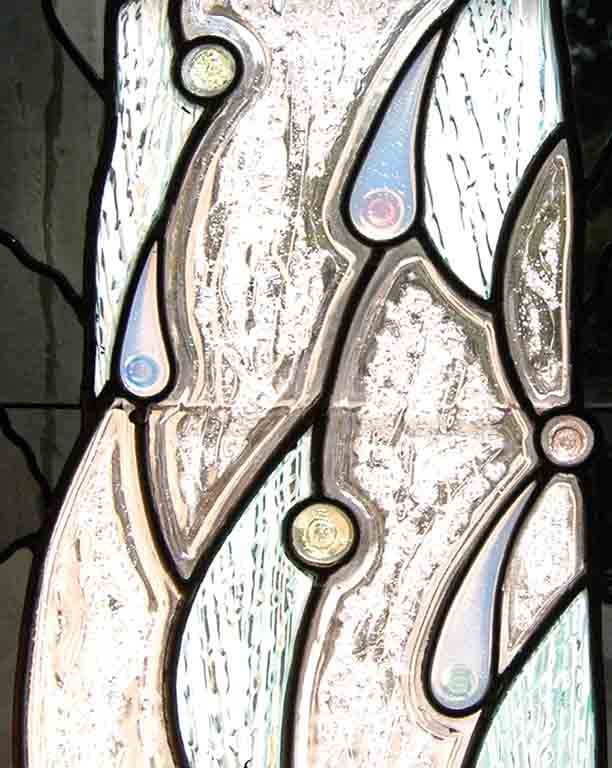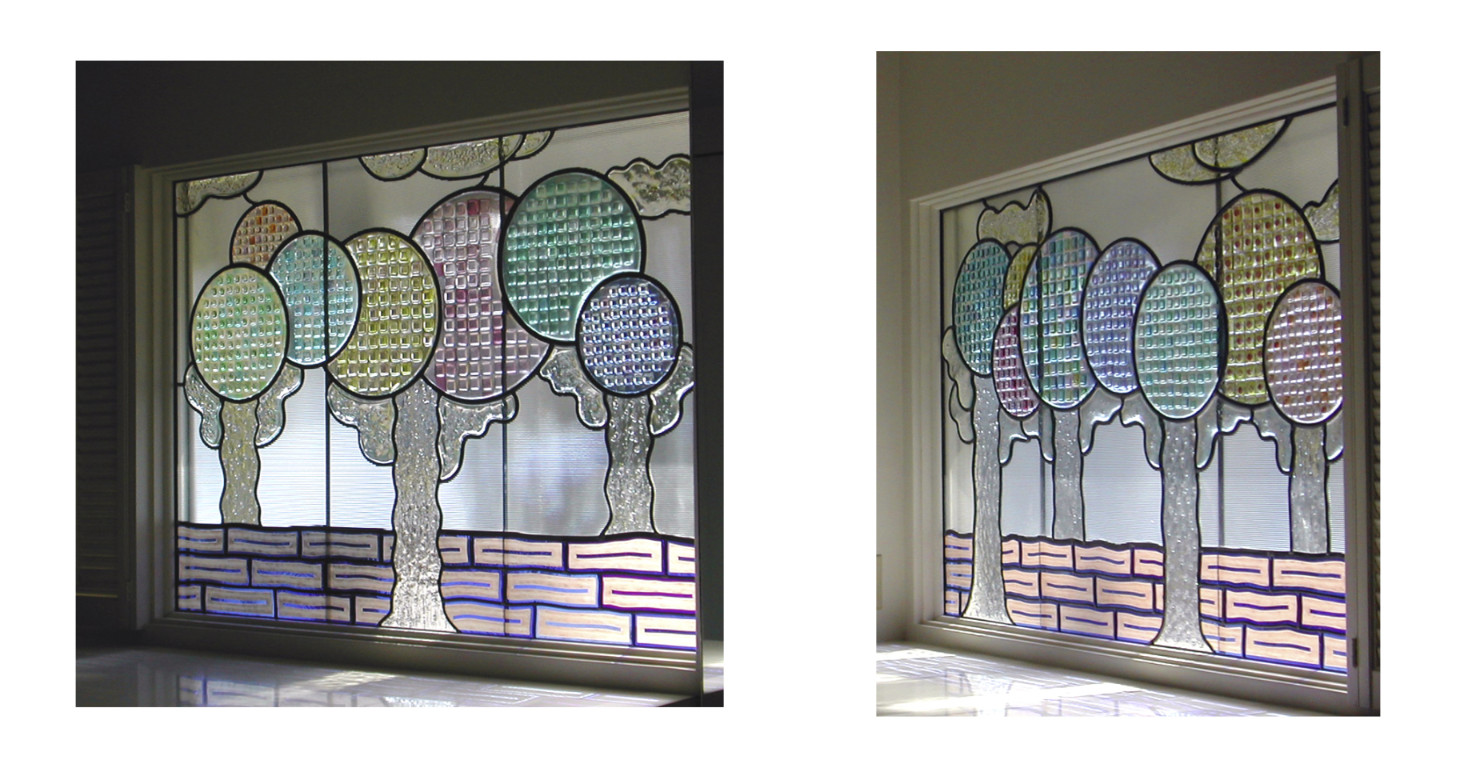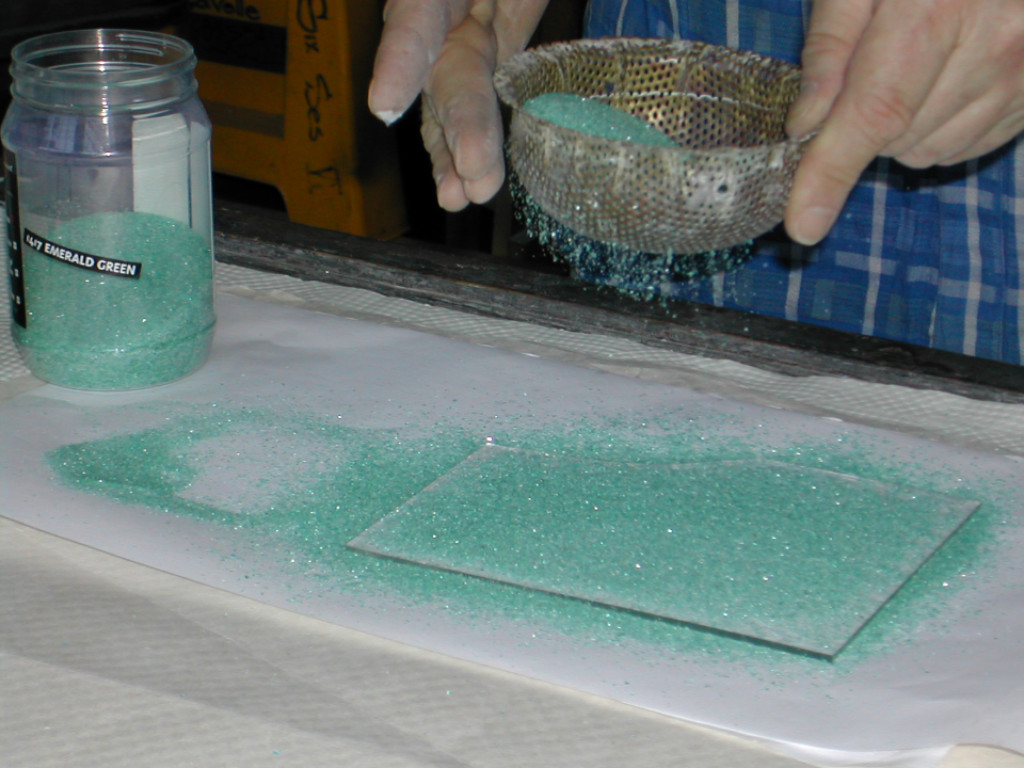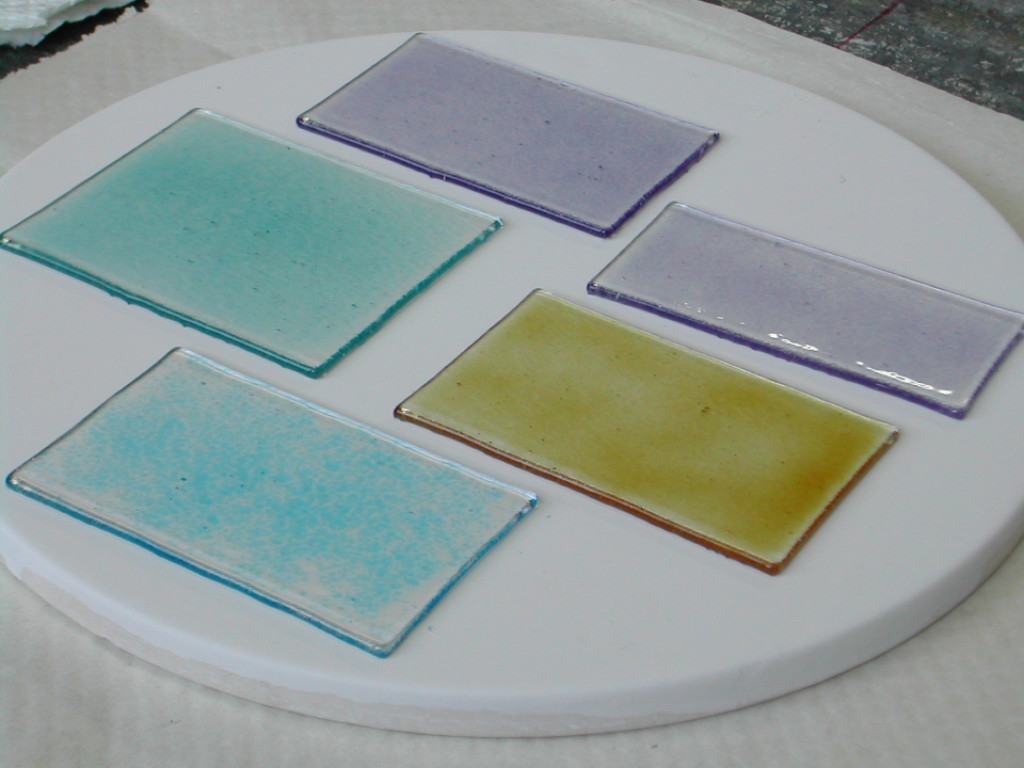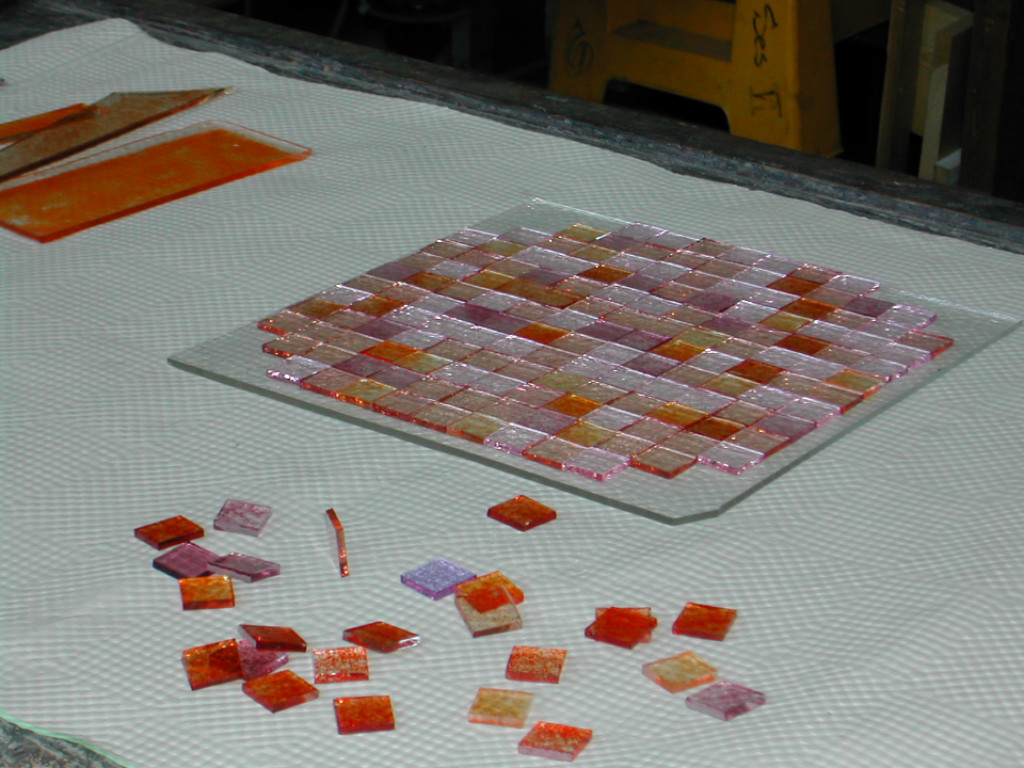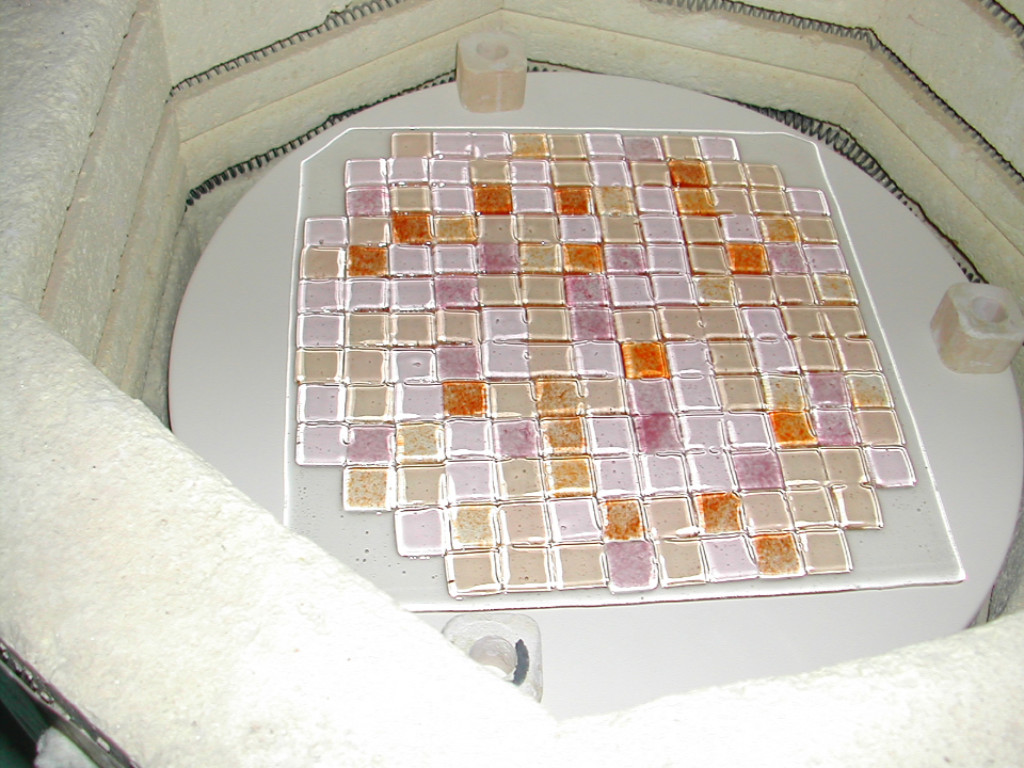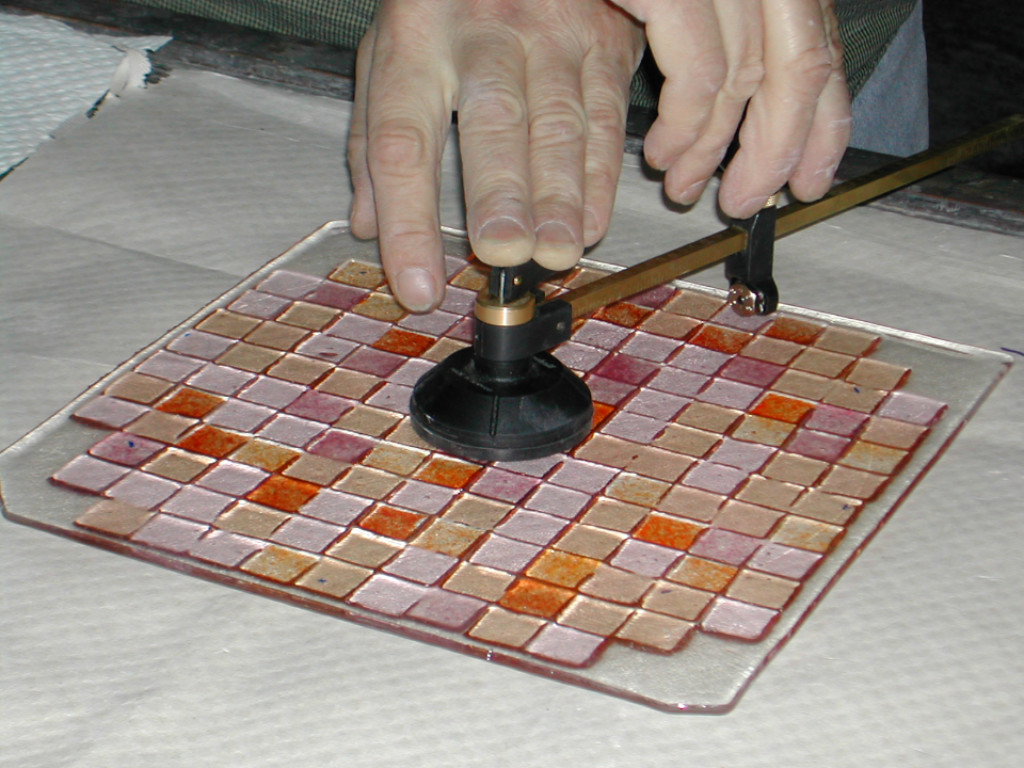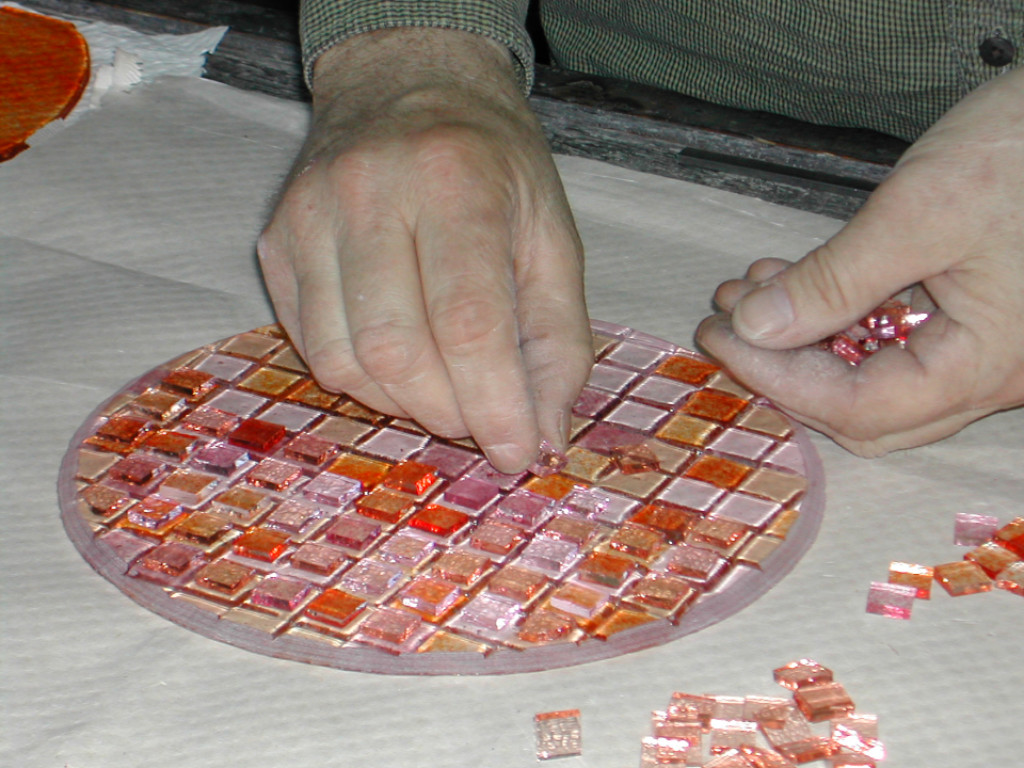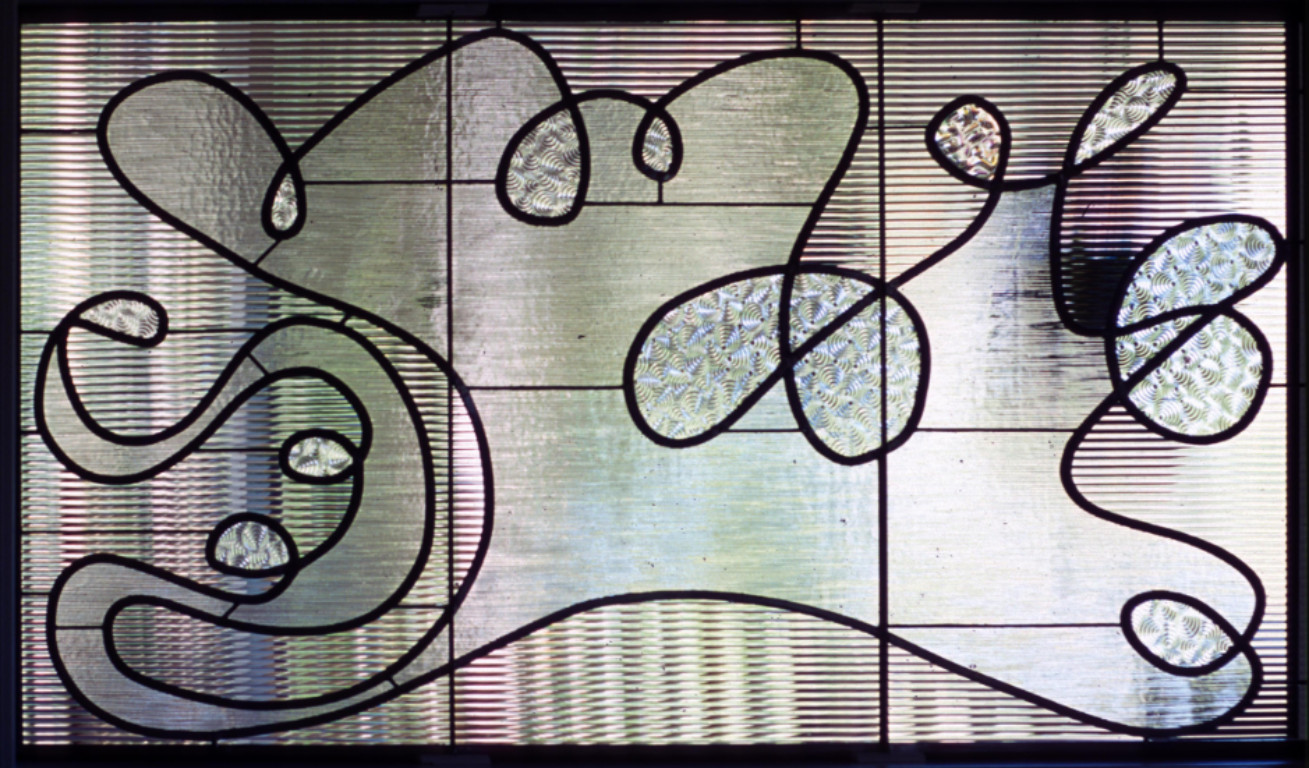Residential Projects
I learned stained glass when I went to work for the church renovation firm Gibbons of Baltimore.
Church windows, mosaics of color from a distance with fine details when viewed close-up, set a way of thinking about glass in any setting. The windows were often painted, which muted the light and helped set a solemn tone.
Closer to our own time, Victorian interiors employed stained glass to provide a dimmed-down, somewhat moody interiors, often sparkling with faceted or cast glass jewels.
While glass can be utilized to convey an image, I tend to think of it more abstractly as an interpreter of light and as a medium to be manipulated and explored.
-
Designs and Details
It is a common request that the glass provide some degree of privacy. With a neighbor's house just a few feet away, heavily textured glass is used to completely obscure what is going on inside.The clear textured glass in these panels brings in plenty of light.
Pattern is a common feature of stained glass and that is used here to create something of a tapestry effect.
I sometimes build a model for a project to see my own ideas worked out and as a presentation to a client.
This model contains all the elements of the proposed panel and illustrates the close-up detail that is the reward for taking a closer look.
While medieval glass used painted and fired elements as details, I'll often use fused glass.
In this panel, the central clear parts are stacks of glass that have been fused. I also fused the blue near-squares to give some variety—with a base of royal blue, I added layers of lighter colors fused to the basic dark color to add a subtle shading arrangement.
The project above included glass shapes that are stacked and the fused. As the heat in the kiln softens the glass the corners round off and the pieces become a single mass. This process can be stopped and the glass will retain those characteristics, unlike water that is either a solid or a liquid.
The project below has colored glass circles fused between two layers of clear glass. The "halo" around each colored piece is air that is trapped between the layers. The triangular shapes are actually 3-D pyramids of glass, a small mold of plaster and sand having been filled with glass and then fired until the glass becomes one piece.
I often start with a simple underlying rhythm or sectioning of a design, which might not be emphasized or even apparent, but is fundamental to the structure, much like the bass line in a piece of music.
Sometimes there is no central image—this panel is more about the gradations and inserts at the top and bottom borders Painted Glass
Another method of bringing detail into a panel is the use of glass paints—paints that are applied to the glass and then fired for permanence. Glass painting is a feature of the very oldest stained glass.
A technique that was developed a little later—talking the 14th century here—is the use of silver stain, a compound of silver that stains the glass, depending on the compound used and the firing temperature, from a light yellow to deep amber color. J. Kenneth Leap has a book about it and there are details of its use at this site of a couple of old-timers, David Williams and Stephen Byrne.
One more technique to mention here...glass etching. There is a type of glass called flashed glass, where a base glass, often clear or some light color, has a layer of a deeper color added when the sheet is manufactured. Carefully sandblasting the colored layer can render shading of that color or removal of it, showing the base glass color.
-
Arts & Crafts
Frank Lloyd Wright-ish
The first panels here are in the style of Frank Lloyd Wright. He works with simple straight angles, creating areas of activity with plenty of nicely proportioned space in between. I say "style of"—unless a copy is being made for whatever reason, my feeling is that one should study originals to learn the principles, then close the book to design using the lessons gleaned.
I used those angles a number of times—they create dynamic shapes as they stack.
This panel that looks out on a woods is one of my favorites of this motif.
To make the spirals in this panel I fused layers of different colors, sandblasted the spiral to expose the underlying layers, then re-fired the glass to bring the sandblasted areas back to a full gloss.
The swooping line holds an array of beveled pieces, and a principal glass was chosen to give some sense of privacy but also to allow one to have an idea what is going on outside.
-
Bubbles: Drawing with Air
Years ago I stacked glass pieces of various diameters so that some cantilevered out beyond the edges of the glass piece below.
Bringing these pieces to fusing temperature, the extended pieces of glass softened at the edges and attached to the glass below, thus trapping air around the circumference of the smaller-diameter glass pieces.
The results were the defined circles in the photo. The "content" of the center circlular bubble and the outer partially round, tapering bubble is air. As with bubbles in general, the "shape" is defined by the edge of the bubble- where the trapped air meets an edge (or edges) of the material.
One can also see the smaller bubbles of trapped air.
These bubbles and the lines they engendered gave this glass a dynamic quality, and marked this technique as something to explore in fufute fused work.
For these kitchen windows the client wanted something to obscure the view into the kitchen up to a certain height and to preserve the view out above that height.
This glass technique employs three layers of glass fused together.
As set into the kiln, the upper and lower glass pieces are intact pieces of clear glass. The center layer is composed of the cut shapes seen.
When the glass is heated to fusing tempertature, the topmost glass fuses to these cut details and sags around them, then attaches to the bottom piece of glass, trapping smaller bits of air where these two pieces come into contact.
The air surrounding each cut piece is trapped and those edges help define the "drawing"—what reads as the best-defined lines in the composition are actually trapped lines of air.
Composing these dogwood flowers, leaving what appear to be the lines of the drawing as voids in the inter-layer of glass, was a lot of work.
The results look like they might as well have been a commercial glass pattern, so the desired result was achieved but, in the end, was rather mundane looking.
I interpreted some Degas pastels of women in the bath using the bubble technique...
-
Natural
Guest Room Windows
This house has a guest bedroom and an adjoining bathroom in the basement of the house, with natural light available via window wells. The window wells tended to gather schmutz, so we made these windows.
The nighttime and morning windows are in the bedroom and the ducks and heron are in the bathroom.
There is quite a bit of technique employed for these panels—painted details, sandblasting to give shading ro the small flowers and the bluebird, and the use of fritted glass sprinkled and fused to a base layer to create the skies.
Door and Sidelite Panels
Sometimes being a glass maker means working with some unusual canvas arrangements that wouldn't come up in a typical art project. This is such a case.
There is the opening in the door, and next to the door is a sidelite. Both of these are at the front entry, where we wanted the glass to provide some sense of who might be on the other side of the door while not making it easy to simply peer in and see what is going on inside.
-
Oddball Projects
Fanciful Trees
These two panels were in a part of the house where complete privacy was desired. The photo is a composite—the panels are actually in separate parts of the room.
I wanted to work with a lot of colors, but wanted them to be on the lighter and brighter side. Some of these colors are available in sheet glass, but that form is darker than what I wanted to work with.
Bullseye glass sells their standard colors in ground-down form, including coarse, medium and fine frit and powder. The fine frit worked perfectly for this project. I made up a bunch of glass of various light tones and, once fired in the kiln so they were essentially small sheet of glass, I could use these in a variety of ways to playfully construct each element.
That process is depicted below.
One Line Window
My friend, the artist Deb Stoner, once designed a series of eyeglass frames using a single length of metal. That is where the idea for this "one-line design" came from. It is a 7' wide interior window.

